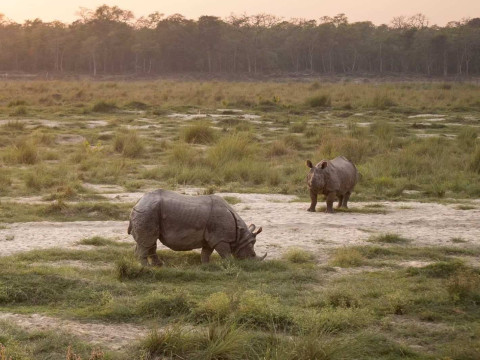Overview
Nepal is a typical example of an Asian elephant (Elaphus maximus) range country with a small but growing population of ~240 individuals. Various efforts (e.g., electric fence, cultivation of unpalatable but high-value crops, radio-collaring of the problematic wild elephants, conservation education, mobilization of rapid response teams, etc.) have been initiated to reduce human-elephant conflict (HEC). The COVID-19 pandemic has created new challenges for communities living with elephants, and in effect, it has decreased community tolerance towards wild elephants. Increased unemployment together with low income from tourism has increased the risks of wildlife crime, community motivation to conservation is low and HEC is increasing due to inactiveness of community towards mitigation measures. This project focuses on building community tolerance to wild elephants by increasing effectiveness of HEC mitigation measures and generating conservation incentives during and after COVID-19 pandemic.
Project objectives
- Increase community tolerance towards elephants through preventive measures and economic alternatives
- Strengthen community-based early warning systems about the movement of problem/musth bull elephants
- Increase human tolerance towards wild elephants through behavioral changing education and outreach programs
- Strengthen local trans-border cooperation with India
Expected outputs
- 80 km electric fence revived with additional deterrent component
- Eight fence watch guards equipped and mobilized
- 20 elephant watch towers upgraded and maintained
- 650 households cultivate non-palatable cash crops (menthe, chamomile, turmeric, lemon and chilly)
- 30 elephant response teams (ERTs) formed and mobilized
- A landscape level HEC database centralized in Bardia National Park
- 50 human-elephant coexistence (HECx) trainers produced
- 150 village-level HECx awareness sessions reaching ~4,500 people
- Wider dissemination of elephant conservation knowledge and awareness through FM stations, newspapers and awareness materials
- Six trans-border cooperation meetings between India and Nepal
- Six exchange visits for Nepalese and Indian community conservation leaders
Project partners
Bardia National Park and Buffer Zone Management Committee, Banke National Park and Buffer Zone Management Committee, Shuklaphanta National Park and Buffer Zone Management Committee, Community Forests Users Groups and Local Municipalities
Project duration
January 2022 to December 2025
Budget
$ 510,059 ($401,336 USFWS, $108,723 NTNC)
Principal Investigator (PI): Dr. Naresh Subedi, Conservation Program Director, NTNC
(nareshsubedi@gmail.com, 9855056934
Co-PI: Ajit Tumbahangphe, Conservation Officer, Bardia Conservation Program, NTNC (atumbahangpfe@ntnc.org.np, 9858025107)
The project is funded by the Asian Elephant Conservation Fund of the United States Fish and Wildlife Service (USFWS).








